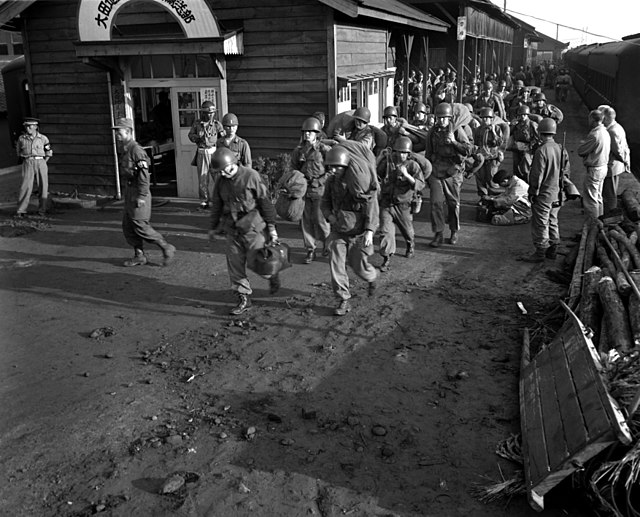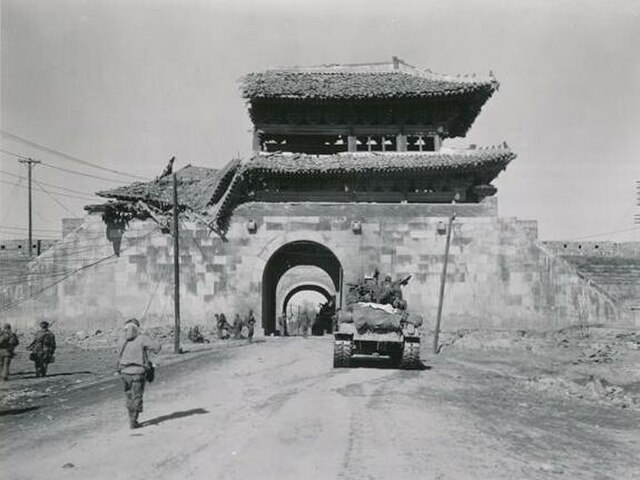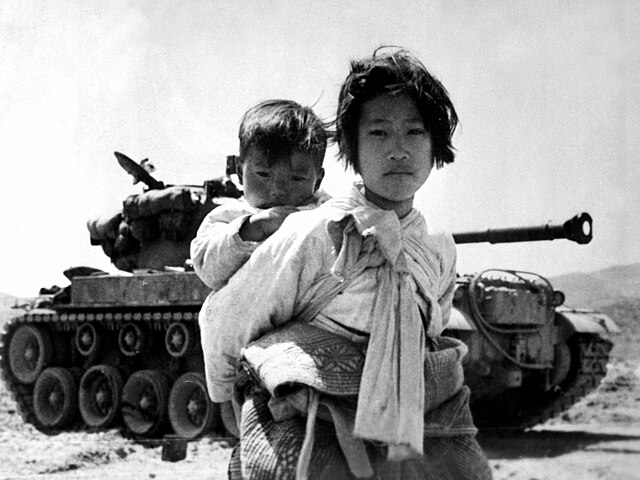The Battle of Osan was the first engagement between the United States and North Korea during the Korean War. On July 5, 1950, Task Force Smith, an American task force of 540 infantry supported by an artillery battery, was moved to Osan, south of Seoul, the capital of South Korea, and was ordered to fight as a rearguard to delay the advancing North Korean forces while more US troops arrived to form a stronger defensive line to the south. The task force lacked both anti-tank guns and effective infantry anti-tank weapons and had been equipped with obsolete 2.36-inch rocket launchers and a few 57 mm recoilless rifles. Aside from a limited number of HEAT shells for the unit's 105 mm howitzers, crew-served weapons that could defeat T-34/85 tanks from the Soviet Union had not yet been distributed to the US Army forces in South Korea.

A US soldier, Robert L. Witzig, with a 2.36-inch bazooka prepares to take aim at a North Korean tank during the Battle of Pyongtaek which took place after the Battle of Osan. On his right is Kenneth R. Shadrick, who was later reported as the first American killed in the Korean War.
Task Force Smith arrives in South Korea
The T-34 tank was standard armor by the North Korean Army in 1950 and was used at Osan.
Soldier of the 21st Infantry Regiment, 24th Division, captured and executed by North Korean forces, 1950
The Korean War was fought between North Korea and South Korea from 1950 to 1953. It began on 25 June 1950 when North Korea invaded South Korea and ceased after an armistice on 27 July 1953. North Korea was supported by China and the Soviet Union while South Korea was supported by the United States and US-led United Nations (UN) forces.
Image: Chosin
Image: Korean War bombing Wonsan (cropped)
Image: Namdaemun, Main Southern Entrance to Seoul (cropped)
Image: Korean War Refugee With Baby (cropped)








